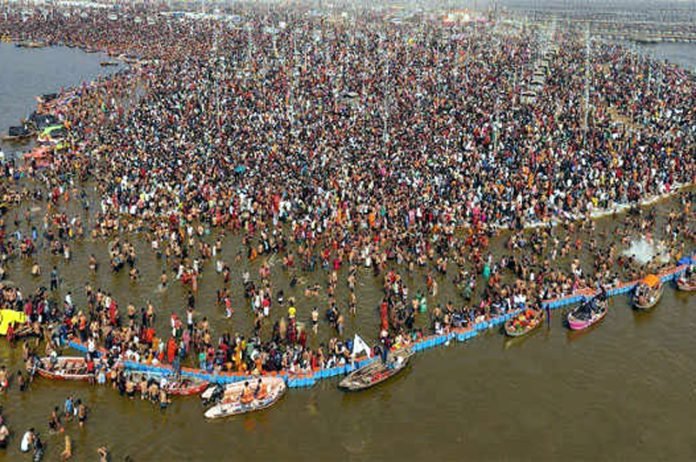Over 50 lakh devotees from Nepal have gathered at Prayagraj to take part in the Maha Kumbh Mela, the world’s largest cultural gathering. The devotees participated in the sacred ritual of taking a holy dip in the Sangam, the confluence of the Ganga, Yamuna, and Saraswati rivers, as per official sources.
A Global Gathering at Maha Kumbh
The event, organized under the leadership of Uttar Pradesh Chief Minister Yogi Adityanath, has drawn millions of devotees from across the world, with Nepali pilgrims playing a significant role in the occasion. Sources revealed that Nepali devotees brought holy Akshat (rice) and other sacred offerings from Janakpur — the hometown of Maa Sita, Lord Ram’s wife, to offer at the Bade Hanuman Temple at the Sangam. In return, they are carrying back Ganga water and sacred sand from the confluence, which they consider an invaluable spiritual heritage.
Pilgrimage to Ayodhya and Kashi
Apart from the holy dip in Sangam, many Nepali devotees are visiting Ayodhya to witness the construction of the grand Shri Ram Temple and are also making pilgrimages to Kashi, home to the famous Baba Vishwanath Temple. The sacred Ganga water and sand from Sangam are being taken back to Nepal, where they are used in various religious ceremonies, further strengthening the spiritual bond between the two nations.
Devotees Bring Sacred Offerings
Ram Sigdel, President of the Nepal Association of Tour and Travel Agents (Banke Chapter), shared that the Akshat brought from Janakpur was offered at the Bade Hanuman Temple on the banks of Sangam. He emphasized the significance of Sangam’s sand and Ganga water, describing them as priceless heritage for Nepali devotees.
Appreciation for Arrangements
The arrangements made by the Yogi-led UP government for the Maha Kumbh Mela have been widely appreciated, with many visitors, including the Nepali devotees, acknowledging the seamless management of the event. The well-organized facilities have ensured a smooth and hassle-free experience for pilgrims coming from across the globe.
Gifts from Nepal and Cultural Prosperity
Devotees have also brought gifts from Nepal to enrich the religious prosperity of the event. These include new clothes, jewelry, fruits, dry fruits, and traditional items like dhoti-kurta and towels. These symbolic gifts, representing the cultural and spiritual wealth of Nepal, add to the sacred atmosphere of the Maha Kumbh.
With the growing importance of religious sites like the Shri Ram Temple in Ayodhya and the Vishwanath Dham Corridor in Kashi, Nepalese devotees are increasingly drawn to visit these spiritual landmarks. The convergence of lakhs of devotees from Nepal to the Sangam has further amplified the divine aura of the Maha Kumbh Mela in Prayagraj, making it an unforgettable religious and cultural experience.




